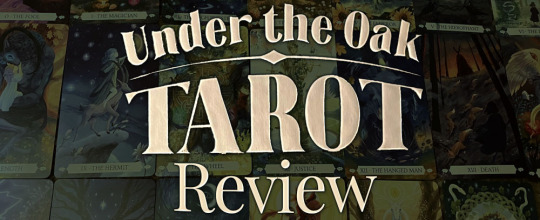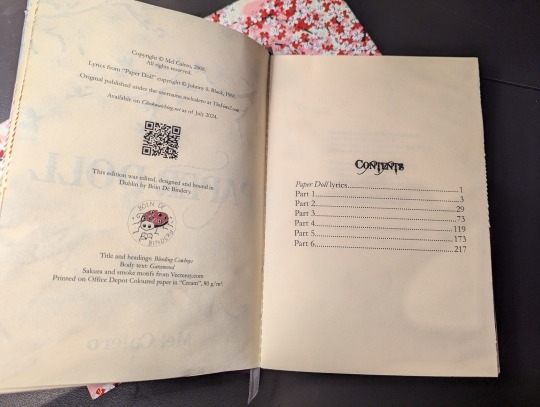#Borderless Access
Explore tagged Tumblr posts
Text
Borderless Access
We provide cutting-edge market research services for businesses worldwide. Unlock actionable consumer intelligence with our data-driven expertise. Explore our Borderless services now!
0 notes
Text
Is The Future Of Medical Consultation In The Middle East Digital?

Naturally, healthcare has become a primary global focus as a result of the Covid-19 pandemic. Patients and medical professionals alike have adapted their behaviour around healthcare consultation practices – and these changes are predicted to have ongoing effects. Borderless Access used its extensive digital panel to conduct online research in ten countries, to explore current and anticipated modes of medical consultation.
In-person consultations see a dramatic drop
It comes as no surprise that there has been a dramatic drop in the frequency of doctor consultations worldwide, with nearly 70% of people having completely stopped visiting the doctor or massively reduced their medical consultations since the outbreak. This trend is apparent across all countries, but particularly strongly driven in the Middle East region, through both Saudi Arabia and the UAE.
Patients and doctors have adapted quickly, finding new consultation alternatives. Over a third of people have reduced in-person consultation and started to consult medical professionals online, and nearly a quarter have used telephonic consultations for the first time. Households with children are more ready to embrace online consultations than those without children in them.
Phone and video consultations gain traction
In terms of online methods of consultation utilised, smartphones are more common than computers. In-app chats are preferred, with social media and video also being commonly used. Non-millennials especially drive the in-app preference, while millennials are happy with all forms of online media.
Globally, three-quarters of people appreciate doctors offering video consultation options. This is strongly driven by both surveyed Middle Eastern markets. Although this sentiment is more strongly felt by millennials, it is also important for non-millennials.
In Saudi, people are most satisfied with in-app chats, followed by social media and video consultations. In the UAE however, the highest satisfaction rests with video consultations.
Prime opportunities for digital medical consultations
Going forward, two-thirds of people will use only online or a combination of online and in-person consultation. Millennials are driving this particular trend strongly but all age groups show enthusiasm for digital consultation options. In total, only 17% of people are still adamant that they will solely use in-person consultation.
Developing markets drive the requirement for digital consultations
Interestingly, the willingness to embrace digital consultations is more strongly driven by developing than developed markets. The UAE and Saudi Arabia both show a strong likelihood to utilise digital methods in future. Those who stopped in-person consultations for safety reasons are more likely to continue with digital methods, having discovered that they adequately fulfil their need.
Four-fifths of people globally will use online consultations going forwards
A striking 80% of people believe they are very likely or likely to use online consultation modes in future, compared to the 43% of people who are using them now.
We are already witnessing a pivot towards online modes in so many areas of life, as people settle into the work-from-home regime, and embrace digitization across sectors.
The healthcare profession is thus presented with a prime opportunity to meet the needs of patients - especially in developing countries - by providing adequate and comprehensive digital consultation options, drawing on learnings gained during the respective lockdown periods, and extending these as the world adjusts to its new normal.
Our BA Health can help you conduct digital online surveys across various sectors, including health care. Please contact us to discuss how you can access your healthcare trackers or ad hoc data collection using our deeply profiled digital panels across the globe.
#Medical Consultation#Future of Medical Consultation#Digital Healthcare Consultation#Digital Doctor Consultation#Healthcare Market Research#Middle East Market Research#BA Healthcare#BA Health#Borderless Access
0 notes
Text
"‘Trans man’ remains the preferred identity for Malaysian individuals who were Assigned female at birth but live their adult lives as men. The jettison-ing of pondan, pak nyah, wanita keras, tomboy and pengkid in favour of ‘trans man’ likely serves as a ratification of personal-communal empowerment and a repudiation of derision. It is even more likely that ‘trans man’ reflects a deep-seated desire to imitate and participate in ‘collective identifcation’, notably that which is cultivated in North American (and European) contexts, ‘in order to demand rights, equal citizenship, and welfare’ among other goals in Malaysia. This is hardly surprising. Technological advances facilitate unprecedented accessibility to copious resources on transgender issues and imagine a global transgender community in borderless solidarity. Travis S. K. Kong points out however, that ‘globalization is an uneven process that reproduces spatially uneven development, and the flow of capital, commodities, people, images, and ideas is never equal among locations’.
The Malaysian trans man thus experiences unequal and unstable access to the bounty of globalisation due to local limitations in education, economic means, social and cultural capital, class, ethnicity, religious affliation, educational levels, infrastructure and health services. He continues to be experience ‘disjunctive modernities’ which exhibit ‘irreducible plurality and local specifcity’, thus dispelling the myth of trans(national) homogeneity in transgender identity. The trans men I interviewed interpret their life stories through the rubric of local contexts that dispel any suspicion of a mere mimicry of western-styled transgender identities. Malaysian re/mouldings of ‘trans man’ speak to ‘experiences of multiplicity in gender identifcation … embedded within specifc social, cultural, and interpersonal contexts [that] create altogether new, emergent forms of experience and identity'."
— J. N. Goh, Becoming a Malaysian Trans Man
697 notes
·
View notes
Text
Baldurs Gate 3 High Quality Screenshot Tutorial 2.0

Hi everyone, I decided I wanted to make a more specific and slightly more in-depth tutorial on how I take screenshots in Baldur's Gate 3. For this tutorial, you will need ReShade and Otis_INF'S Photomode Mod. If you do not want to download these for whatever reason, my older tutorial covers alternative ways to get some nice screenshots.
1. ReShade (skip if you already have ReShade downloaded)
For this step, you're going to want to download ReShade. ReShade is important to this tutorial as it's going to allow you to take screenshots of your game in higher resolutions. To do this, find a ReShade preset you like on the Nexus. (You can find lots of them by just typing in "reshade" in the search bar). From there, most mod authors will explain how to download ReShade in their mod description and get it working for your game.
Once you successfully have Reshade installed, a bar of text will appear at the top of your screen, prompting you to press 'home.' This will put you through a mini-tutorial if just installed it.
2. Photomode Mod
For this mod, you'll need to subscribe to a patreon to get access. Installing it is really simple, just unzip the zip file and put its contents in a folder, then run the tool once you have BG3 running.
Personally, I choose to re-map all the controls to different keys on my keyboard as I find it makes it much, much easier for me to use. Specifically, I re-map the movement, camera tilt, and starting the photomode controls. FOV is also really important to pay attention to, so make sure you like the controls for that as well.
Make sure to test the camera mod to make sure it's working before moving on to the next step.
3. High Resolution Screenshots (Hotsampling)
Hotsampling simply means that we're going to briefly make our game run in a resolution much higher than what we usually would, which often times means your game window will end up looking huge and run off your screen.
To do this, we need to make sure a few things are in place before trying to hotsample, or the screenshot won't be captured properly.
Go through this checklist to ensure hotsampling will work:
• If you have more than one monitor, you have to make sure your monitor is set to show only on one screen. (This setting is found in Displays on Windows)
• Make sure BG3 is set to borderless windowed mode
• In ReShade, go to the settings tab. Ensure you have a key set up for taking screenshots, and that you know the folder your screenshots will be saved to. It's essential to use ReShade to take screenshots, nothing else will work. Use ReShade's screenshot key.
Once you make sure you have the above done, go to the photomode mod, and click on the hotsampling tab. From here, you can change the resolution of your game. Typically, I take my screenshots in 3,840x2,160 or 5,760x3,240 if I want a very clear image. Those are just 2x and 3x my monitor's resolution (1920x1080), so you can adjust if your monitor is different. Once your chosen resolution is set, your BG3 window will likely run way off your screen and potentially make your computer lag. (This means it's working). Make sure your BG3 window is active, then hit the screenshot key you set earlier in ReShade. This screenshot should now appear in the folder that's set for screenshots in ReShade. (It typically defaults to the folder where your game is installed).
4. Extra fine-tuning
There are a couple of ways to enhance screenshots in BG3 even further.
The first way is through using ICGS Depth of field. This tool will allow your sceenshots to minic depth of field the same way cameras IRL can do it it—it makes for some beautiful screenshots, and I'm seriously impressed by how well it replicates that look. The author gives a tutorial on how to get it working—I know it seems complicated, but follow it step-by-step and play around, it'll come to you very soon!
The other tool that I just found recently is Relight for ReShade. This tool allows you to add some lighting on a character, which I thought was so cool. Here's a tutorial for this, too.
5. Post-Processing
This step is entirely up to your own creativity, but I just thought I'd share Photopea as a good, free software (that you don't even need to download) to help you edit your photos. It basically works exactly like photoshop!
Ok that's it for all but I think I will continue to update this post and add to it whenever I find anything helpful :)
& Thank you to all the wonderful mod authors out there for creating all this software and allowing us to take beautiful images, it makes me so happy !!
150 notes
·
View notes
Text
Dragon Age: The Veilguard settings details - Display and Graphics
This post is under a cut due to length.
This information comes directly from the game.
DA:TV menu 'pages': Display, Graphics, Audio, Controls, Gameplay, Interface, Accessibility, Other.
For some of the settings, additional detail on a specific one (the one that was selected at that particular point during the video, e.g. "Window Mode" was set to "Full Screen") is given after the general explanation/definition of the setting itself. These are in italics at the end of an entry.
DISPLAY
Display Mode
Active Monitor: Select the monitor for game display. Window Mode: Switches between full screen, windowed, and borderless windowed modes. You can press ALT+ENTER at any time to switch between full screen and windowed modes. In full screen mode, the game will play on the entire screen. Screen Resolution: Changes the game's display resolution. The game's level of on-screen detail is determined by the number of pixels it contains. Higher resolution increases the number of pixels displayed, which will result in a clearer image. This comes with a potential cost to performance. Refresh Rate: Sets how often your display will refresh game visuals. A higher refresh rate means a smoother picture, depending on your computer's hardware. Frame Rate Limit: Sets the maximum framerate for the game. VSync: Synchronizes the game's framerate with the display's refresh rate to prevent screen tearing.
Calibration
Brightness: Adjusts the intensity of the game's visuals. Makes all visuals lighter or darker. Contrast: Adjusting the contrast will change the difference in color and light between the brightest and darkest parts of the screen. Enable HDR: HDR (High Dynamic Range) mode provides enhanced color and contrast ranges. This option can only be enabled on supported displays. HDR must also be enabled in your operating system. Use the HDR Calibration option below to adjust. HDR Calibration: Launches the HDR calibration tool which adjusts the HDR settings to best match your display. The maximum brightness level should generally be adjusted to match what your HDR display will support. Measured in nits. This is only available when Enable HDR is turned on.
Upscaling
Unsample Method: Improve performance and visuals by rendering the game at a smaller resolution, then "upsampling" to a larger resolution for display. The pixels that make up the difference between the two resolutions are generated using advanced algorithms. Unsample Quality: Select the desired quality level for the upsampling method selected. DLSS Frame Generation: DLSS Frame Generation can generate additional frames that boost your overall frame rate. In order to use Frame Generation, you must have an NVIDIA RTX 40-series graphics card. NVIDIA Reflex: NVIDIA Reflex is a technology that helps reduce input latency while playing the game. In order to take advantage of NVIDIA Reflex's feature, you must have a supported NVIDIA graphics card. Anti-Aliasing: Anti-Aliasing smooths out pixels along the edge of objects that can look sharp or jagged in certain situations. Temporal Anti-Aliasing (TAA) uses information from current and past frames to address aliasing issues. The high setting uses a large range of frames and will result in a higher quality anti-aliasing effect, but with a higher performance cost.
Resolution Scaling
Render Scale: Controls the resolution the game is rendered at relative to your display resolution. Settings below 100% may decrease visual fidelity, but can improve performance. Settings above 100% may increase visual fidelity, but can negatively impact performance. Dynamic Resolution Scaling: Automatically lowers the game's resolution in real-time to maintain the target frame rate. Target Frames Per Second: Determines the target frame rate for dynamic resolution scaling. Minimum Resolution Scale: Determines how low the resolution can be scaled when Dynamic Resolution Scaling is active.
GRAPHICS
Graphics Preset
Graphics Preset: Graphics presets are predefined configurations that simultaneously adjust multiple graphics settings to achieve a balance between visuals and performance. Restart required for setting change. Maximizes visual fidelity by setting most graphics options to their highest values. Recommended for the Ultra hardware specification tier.
Textures
Texture Quality: Selects the level of detail and resolution for textures applied to objects in the game. Higher settings will result in more detailed textures, potentially at the cost of performance. Restart required for setting change. CPU - Moderate. GPU - Moderate. VRAM - Major. Texture Filtering: Adjusts the appearance of textures at varied angles and distances. Higher settings will increase texture quality, though potentially at the cost of performance. CPU - Minor. GPU - Moderate. VRAM - Minor.
Light and Shadow
Lighting Quality: Adjusts the appearance of shadows, reflections, and light-scattering. Higher settings increase the visual fidelity of light effects. CPU - Minor. GPU - Moderate. VRAM - Major. Contact Shadow: Contact Shadows improves the appearance of shadows when objects are close to one another. It fills gaps between objects and shadows that can occur with static lighting. CPU - Minor. GPU - Moderate. VRAM - Minor. Ambient Occlusion: Ambient Occlusion is a technique to simulate soft shadows where objects are close together or where surfaces meet. This makes the scene look more realistic. Disabled when Ray-traced Ambient Occlusion is enabled. CPU - Minor. GPU - Major. VRAM - Minor. Disables Ambient Occlusion. This potentially increases performance at the cost of visual fidelity. Screen Space Reflections: Screen Space Reflections simulate reflections of objects and light on visible surfaces. Enabling this will result in high-quality reflections. Disabled when Ray-traced Reflections are enabled. CPU - Minor. GPU - Moderate. VRAM - Moderate. Volumetric Lighting: Adjusts the appearance of volumetric lighting effects. This simulates how light interacts with atmospheric elements like fog, smoke, dust, and clouds. Higher settings increase the quality of these types of elements. CPU - Minor. GPU - Moderate. VRAM - Minor. Sky Quality: Adjusts the appearance of the sky, clouds, and celestial bodies like the sun and moon. CPU - Minor. GPU - Moderate. VRAM - Minor.
Ray Tracing
Ray-traced Reflections: Enables the use of Ray-Tracing to simulate realistic reflections of objects and light on reflective surfaces. This is a more advanced technique and requires specialized Ray Tracing compatible hardware. CPU - Major. GPU - Major. VRAM - Moderate. In selective mode, the game will only enable Ray-traced Reflections in specific areas that can best take advantage of the feature. Ray-traced Ambient Occlusion: Enables the use of Ray Tracing to simulate soft shadows where objects are close together or where surfaces meet. This makes the scene look more realistic. This is a more advanced technique and requires specialized Ray Tracing compatible hardware. CPU - Major. GPU - Major. VRAM - Moderate. Ray-Traced Ambient Occlusion is always on. Ultra Ray Tracing: Enables the highest level of ray tracing effects, which provide better quality visuals at the cost of performance. This setting is available on the Ultra and Custom graphics presets and is only recommended for high-end graphics cards.
Geometry
Level Of Detail: Adjusts the distance at which objects are visible and the level of detail as they get father away from the camera. Higher settings increase the visual quality of objects at distance. Restart required for setting change. CPU - Major. GPU - Major. VRAM - Moderate. Strand Hair: Strand hair simulates the appearance and movement of individual strands of hair. Enabling this will result in more realistic and natural-looking hair. CPU - Major. GPU - Major. VRAM - Moderate. Terrain Quality: Terrain is the natural landscape and ground surfaces. Higher settings will increase the detail and overall quality. CPU - Moderate. GPU - Major. VRAM - Moderate. Terrain Decoration Quality: Adjusts the appearance and detail of terrain elements like rocks, vegetation, and other environmental objects. Higher settings will increase the quality and density of the terrain elements. CPU - Moderate. GPU - Major. VRAM - Moderate. Visual Effects Quality: Adjusts the quality and detail of visual effects throughout the game. This includes particle effects, decals, and screen effects. Higher settings will result in higher quality effects. CPU - Minor. GPU - Moderate. VRAM - Moderate.
Camera Effects
Depth of Field: The Depth of Field effect causes some elements of the scene to be in focus, and others to be out of focus. This effect is generally only used in cutscenes and conversations. CPU - Minor. GPU - Minor. VRAM - Minor. Depth of Field is only enabled in cinematic sequences. Vignette: The vignette creates a subtle darkening of the image towards the edges of the screen during cinematics and gameplay. This is generally used to enhance the atmosphere of scenes. CPU - Minor. GPU - Minor. VRAM - Minor. Motion Blur: Motion Blur slightly blurs fast-moving objects. This helps make motion appear smoother and more natural. CPU - Minor. GPU - Minor. VRAM - Minor. Post Processing Quality: Adjusts the overall quality of the post process effects above like depth of field, bloom and motion blur. Higher settings will result in higher quality effects. CPU - Minor. GPU - Moderate. VRAM - Minor. Field of View: Adjusts the field of view, which changes how much of the game world is visible during gameplay. A higher field of view allows you to see more of the game world. CPU - Major. GPU - Major. VRAM - Moderate.
[source]
#dragon age: the veilguard#dragon age the veilguard spoilers#dragon age: dreadwolf#dragon age 4#the dread wolf rises#da4#dragon age#bioware#video games#long post#longpost#if you're thinking#fel. why did u type this out#sometimes i search my own blog for info or the answers to things and it will only show up if its written as text :D
69 notes
·
View notes
Text


Joe Biden, to the degree he was cognizant, has always reflected the Obama-era utopia dream of a borderless world, and thus millions of poor have illegally entered the United States. On numerous occasions, he offered clear warnings of what he would do if he ever had power over immigration policy.
Do we remember this 2020 Biden boast to let in millions and offer blanket amnesties?
“But I will send to the desk immediately a bill that requires the access to citizenship for 11 million undocumented folks, number one. Number two, in the first 100 days of my administration, no one, no one will be deported at all. From that point on, the only deportations that will take place are commissions of felonies in the United States of America.” In Biden’s world, if no illegal alien is ever to be deported unless a criminal, then there is at last no border.
Earlier Biden had also bragged, “We could afford to take in a heartbeat another two million. The idea that a country of 330 million people cannot absorb people who are in desperate need and who are justifiably fleeing oppression is absolutely bizarre.”
After 2020, we found out what Biden really meant was that a few thousand privileged and rich people in Martha’s Vineyard, Malibu, and Rehoboth, Delaware, certainly could not absorb even a few hundred in “desperate need”—but the millions of poor in inner-city Chicago, in the Rio Grande Valley, and the Central Valley of California most certainly could absorb “another two million” illegal aliens.
Most infamously, in 2019, Biden gave explicit outlines of the very open border that he has now institutionalized: “I would, in fact, make sure that there is, that we immediately surge the border all those people are seeking asylum. They deserve to be heard. That’s who we are. We’re a nation that says if you want to flee, and you’re fleeing oppression, you should come. (emphasis added).”
Again, Biden assumed that “you should come” applied to downtown New York, South Central LA, or El Paso, but under no circumstances to Kalorama, Kailua, or the empty summer dorm rooms of Stanford or Harvard.
All this braggadocio was unfortunately more than the usual empty Biden blather. As president, one of the first things he did really was to “surge the border” by overturning through fiat some 90 Trump executive orders. Despite countless lawsuits, left-wing congressional stonewalling, and internal agency obstruction, these earlier directives had effectively stopped illegal immigration by the fall of 2020.
Upon taking office, Biden, perhaps for the first and only time, made good on his word as he ranted, “There will not be another foot of wall constructed on my administration.”
Biden not only did his best to ensure an unfenced border, but after the election, he sold off piles of idle wall materials for pennies on the dollar. Thereby, in childish fashion, he reminded the American people (who will needlessly pay additional millions for a new wall, given Biden’s auction and his hyperinflation since 2020) that he hated Donald Trump more than he liked the American people.
Why did Biden destroy the border, allowing in 500,000 violent felons and gang members, over 1 million already served with deportation orders, ten million more unvetted—initially at a time of a government COVID quarantine? Why did he appoint the now-impeached prevaricator Alejandro Mayorkas, who repeatedly and disingenuously claimed that “the border is secure,” even as Americans watched thousands of illegal aliens, drug smugglers, and cartel coyotes crossing the border with impunity?
Was Biden pledged to bend to La Raza pressures?
Did he owe allegiance to a Hispanic activist elite that demanded that millions of new constituents ignore the border, oblivious to the concern of Hispanic border communities? The latter, unlike their elite DEI megaphones, had to deal firsthand with the resulting massive border crossings that overwhelmed social services, drove down wages, bankrupted their schools, and spiked crime in their communities.
Or was Biden simply a nihilist who enjoyed the chaos and the furor it evoked among his supposed “semi-fascist” and “ultra-MAGA” foes?
Was he a hard-left waxen effigy who had no idea that his policies empowered the cartels and their fentanyl pipeline that killed up to 100,000 Americans a year, more than the dead of the Vietnam, Korean, Afghan, and Iraq wars combined?
Certainly, President Obrador of Mexico loved Biden for greenlighting more than $120 billion in remittances that poured into Mexico and Central America, the vast majority of the money subsidized by the American taxpayers whose generous subsidies to illegal aliens freed up their cash to be sent home.
Was the culprit Biden’s legendary innate incompetence fueled by his growing senility? In that regard, it might be best to remember what Obama himself in 2020 said about his former Vice President Biden’s un-Midas touch: “Don’t underestimate Joe’s ability to f**k things up,” and his admonition about the non-compos-Biden’s desire to run in 2020, “You don’t have to do this, Joe, you really don’t.”
Whatever his reasons, how does the Trump administration now correct the Biden legacy of an erased border, a new cohort of 12 million illegal aliens atop an existing body of 20 million, half a million dangerous illegal alien felons, 600 neo-Confederate sanctuary city jurisdictions, and the destroyed corpus of federal immigration law?
One, the administration must change the entire current illegal alien dialectic.
Massive illegal immigration is not a humanitarian project. It is a deeply immoral one. It undermines the rule of law. It insults legal immigration applicants by punishing their lawfulness and making them follow hundreds of protocols while exempting and thus rewarding the lawbreaking.
It is a cynical ploy by the governments of Mexico and Central America to provide a Turnerian “safety valve” for their dispossessed to head north rather than to protest at home for reform.
It is a money-making scheme costing the U.S. $120 billion in remittances alone. The arrival of millions of impoverished migrants to the United States involves virtual indentured servants who are sent northward by their home countries in the expectation they will send hundreds of dollars a month back southward to help their families, who in turn are long neglected by supposedly caring Latin American governments.
It is a war on the American poor, whose wages are eroded by millions of the undocumented, and whose social services, from health to housing to education, are swamped by non-citizens in dire need of government support.
It is a long-term effort to import and nurture a new constituency of those in need of more entitlements and bigger government. The aim is to flip more red states to blue, as if Georgia, Arizona, and Texas will follow the demographic metamorphoses of California, Colorado, Nevada, and New Mexico. Two, Trump, within a year, can finish the wall. A permanent steel/concrete fence of some 2,000 miles will help staunch the influx. So will an immediate executive order ending catch-and-release and requiring application for refugee status before entering the U.S. legally. Three, Trump can stop the flow of $120 billion in subsidized U.S.-based remittances to Mexico and Latin America. He can threaten all such cynical recipient nations with tariffs. He can further levy a blanket 20-30 percent tax on all remittances sent to Mexico and Latin America from the United States, regardless of the legal status of the sender. Combined with a wall and new border enforcement, such tariffs and taxes would stop the influx quickly. Four, either passage of new legislation to overturn or winning court reinterpretation of the supposed “anchor baby” clause of the 14th Amendment could end the entire imbroglio of women and couples entering the US solely to obtain infant citizen status (as well as free health care), in order to anchor legality for an entire family. Trump can merely say, “We need to follow the humane policies of the sophisticated postmodern European nations, none of whom allow unrestricted and automatic anchor-baby provisions.” Five, to encourage self-deportation, Trump can seek legislation that would forbid for 20 years any foreign national from receiving a legal visa or green card to enter the United States if, at any time in the past, he had been detained entering the United States illegally. Six, Trump can begin carefully calibrating deportation iterations, starting first with those whose deportations win widespread public support.
The first to go home should be the half million suspected felons and criminals, both those who were arrested here and those who came with criminal records.
They would be followed by 1.5 million aliens already facing deportation orders but who failed to show up for hearings or ignored their prior deportation orders.
The third cohort would include all those who have had no work record, are able-bodied and are currently on local, state, or federal assistance of any nature.
Trump then could issue immediate deportation orders for additional aliens arriving from countries that support terror or are deemed hostile to the United States. That would entail those with known ties to Hamas, Hezbollah, and the Houthis, or arriving from Iran, Gaza, the West Bank, Syria, Yemen, Sudan, Somalia, North Korea, Cuba, Russia, Venezuela, and a host of others,
To separate the Biden influx from earlier illegal entrants, Trump could offer not an amnesty or citizenship but a green card to those who have: 1) resided in the US for five years, 2) have not committed a crime, 3) are not on public assistance, and 4) would pay a fine for their prior illegal entry.
After those rounds of deportations, the administration might have sent home 10-12 million with full public support. Only then would the public back the one-time issuances of green cards to some of the remaining 20 million pre-Biden illegal aliens, who are working, crime-free, not on public assistance, and have resided over five years in the United States.
All these measures might halve the number of illegal aliens and stop all future illegal immigration. They would allow Americanized prior illegal aliens to formalize their status with a green card that would not entail amnesty but simply allow those now here legally to work, and in some cases, if they wish, to begin the lengthy legal process of obtaining citizenship.
The time to act is now.
In an odd way, Biden’s influx has finally resulted in the American Hispanic community’s abandonment of their former support for open borders. Why?
The sheer size of the current immigrant wave posed unprecedented costs, social and demographic disruptions, and dangers to the viability of existing social services for citizens.
Worse in some ways are the asymmetrical burdens that elite open-borders activists have placed on the Hispanic middle and poorer classes, whose communities bear the brunt of massive illegal immigration.
But most cynically and importantly, half the new arrivals are not from the Latin American world and thus have smaller, if any, expatriate apologists or activists in the United States. It seems to be one thing for the open borders advocate to demand illegal entry for an uncle in Mexico and quite another to extend that same exemption and costly support to someone from Russia, Syria, or mainland China.
A final note: those who destroyed the border and immigration law with it will be the first to decry the cost and trouble of undoing their damage—on their theory that because it costs much to arrest, detain, and try a criminal suspect, it is, therefore, cheaper and wiser simply to let him continue to commit crimes with impunity.

30 notes
·
View notes
Text
Deck Review: Under the Oak Tarot by Ofride and StregaDelleMele

This is a borderless deck featuring a sometimes-sightless girl named Anima as she traverses a fantastical otherworld.
Physical Concerns
Overall: 10/10, so far very satisfied (especially for the price), would buy again if I lost it
RWS Clone? No, but RWS symbolism is obvious in a handful of cards, notably the High Priestess and many Major Arcana cards. Other cards are completely unique.
Cost: 10/10 for quality. As of this review, $26 without shipping
Card stock: 10/10, the card stock has a nice texture and feel sturdy. But it isn't the super thick stock that's stiff and difficult to bend. It doesn't feel cheap and it's nice to shuffle. Also, gilded edges, which we love. It's a standard size deck.



Box: The box is nice and relatively sturdy. It's not a huge box (like we see with Woodland Tarot or Animal Totem Tarot) which I like, because my storage isn't unlimited. The box has an unattached lid and you can dump the cards out for easy access. The LWB fits in the box. Sometimes I struggle with hand pain and it feels like an easy access box.
Little White Book (LWB): It's a 128 page book with translations for English, Italian, Spanish, and Portuguese. It includes meanings for each card, and three spreads with very little explanation. More about LWB meanings and card interpretations below.
Deck Theme and Symbolism
Per the introduction in the LWB, this deck follows the journey of Anima, a visually impaired child who travels through a fantastical otherworld and learns to develop a second sight.
While many of the cards that feature Anima show her being blindfolded, the deck clearly uses sightedness as a metaphor for spiritual enlightenment or "second sight." All of the 10s cards and The World XX show Anima as seeing clearly without her blindfold, and some other cards show partial sightedness as well.
Beyond that, this is an eclectic deck, no two ways about it. This is primarily present in the court cards and some of the Major Arcana cards.
The Pentacles cards feature Basque mythology; Wands are Welsh and Celtic, Swords are Norse, and Cups are Greek. There's also Hebrew symbolism (notably the High Priestess II), and probably other stuff I haven't picked up on because I'm not the most well versed in mythology.
A lot of the cards feature mythical beings, but there are also statues and woodland creatures.

Sorry for photo quality, I don't have a great camera.
I think the symbolism is nice. Sometimes the cards are more heavily re-imagined (like the Star XVII and Moon XVIII), while some of them are more or less exactly what you'd expect from RWS symbolism (Devil XV).
The Minor Arcana takes more symbolism liberties, and some of the cards are very different from RWS.

Overall, I really enjoy how it reads. I love a good borderless card, and this deck is A) fun and B) really pretty to look at. It's got enough familiar symbolism to ground me, but a lot of the cards are very different and with enough wiggle room to explore my own interpretations.

Card Interpretations
The LWB interpretations are all about a spiritual journey, healing, and transformation. So if you're looking for a spiritual journey deck, this one might be for you.
At the same time, there's enough going on with the cards that I didn't find it to be difficult to link the meanings to a wide variety of topics.
The one thing I've got no idea about is the runes, which feature heavily in the Swords suit (which is also the suit where all the court cards are Norse entities). I don't know if the runes are thematically relevant to the card at hand or not. Hopefully they are, because I can imagine how irritating that would be if you read runes and it doesn't match.

Here are a few Minor Arcana honorable mentions. Note the familiar symbolism of the 6 of Pentacles (bottom row, second from left), but the unique symbolism of the 5 of Swords (bottom row, far right).
Overall I found the cards to be evocative and easy to connect to, with enough symbolism in each image to facilitate intuitive reading.
53 notes
·
View notes
Note
can you explain what transMad means to you using simpler words and shorter sentences please? im not phd i don't understand all these citations. thankyou
i can try!
first, I recommend starting with the easy read version of toward transMad epistemologies: a working text. It's not an exact 1:1 and i have many gripes with the obfuscating/inaccuracy-making work of plain language. But it's a start! I'm also v open to feedback on it.
I'm also going to try my hand at simplifying + summarizing the excerpts I included in the other post, in the rough order that I list them there. below is my attempt. it will be imperfect but I hope it helps!
transMadness, redux:
transMadness isn't just, or most importantly, an identity per se. It's a way of thinking, knowing, and being in the world. I got the idea for transMadness, in part, from words like "neuroqueer" and "queercrip," portmanteaus that also gesture at the links between different forms of bodymind noncompliance. Both are interested in norm-transgression, and both don't hold with artificial boundaries between types (gender, sexual, disability, etc.) non-normativity.
What transMadness does with this knowledge is to embrace unruliness and borderlessness as important to how we know what we know. If psychiatry/the DSM establish authority by creating borders and categories for pathologizing us, transMadness embraces intellectual interdependence and ambiguity, as well as willful refusal of "sane" approaches to organizing the world.
transMadness is also an embrace of failure -- failure to comply, failure to "live up to" cis/sane standards, failure to work without friction -- as something generative, not negative. This is something we can bring into our research/relationships/pedagogy. We can embrace it as a feature of our community, and use it to navigate challenging situations where access needs conflict - for example, when bodily autonomy creates risk for multiple marginalized groups of people.
Another way that I look at transMadness is through xeno/neogender identity and community. For me, an orientation toward coinage/invention is a deeply transMad one, which takes psychiatric/medical authority over language and legitimacy and turns it on its head. Xenocommunities/self-dx oriented communities reclaim and transform hitherto violent language to suit their needs and possibly even serve collective liberation. The communities that form around identificatory self-determination are vital to keeping us alive and loved, and to transMad antipsych resistance. In the face of diagnostic practices that demand individual rehabilitation rather than social transformation, this is deeply necessary.
#let me know if this is clear or if i need to define anything further!#transmad#ask#anonymous#antipsychiatry#epistemology#xenogender#madness
65 notes
·
View notes
Text



PAPER DOLL by Mel Calero
If Borrasca was unusual, then this one is niche. Shout out to alumni of the Sims 2 Story Exchange, for whom this will be a blast from the past 💚 If you had a popular fantasy or legacy series on that platform, I probably signed your guestbook or gave you benes on the forum at some point. God, I'm getting old.
PAPER DOLL was one of the works of fiction published on the official Sims 2 website, which was shut down in 2009 by EA causing the loss of thousands of uploads. Unless authors were particularly diligent in backing up their story uploads on other platforms, most published stories died with the website and are no longer available.



Thankfully, some forward-thinking souls had the sense to back up a selection of the uploads before the website went down for good. These can be accessed here. It's where I rediscovered PAPER DOLL, which was peak fiction to me when it was uploaded c. 2007-2008.
The beauty of the Sims 2 Story Exchange was that text uploads were accompanied by illustrative screenshots from the game. PAPER DOLL was one of the more stylised uploads to the platform. The custom content might seem crunchy now, but at the time it looked premium (given we were all on XP or Vista graphics). Realistic skins, eyes, hair and outfits were very much the trend back then. The author (melcalero) had a eye for aesthetic and style that holds up.


Anyway, it's a reading experience I hold dear and a story I wanted to archive physically. I made the decision not to include any of the game screenshots, out of consideration for my printer cartridges, but I included all published text with some editorial changes (spell checking, consistency revisions etc). It's technically unfinished (was a part 7 shared off the Exchange?? I could be misremembering) but part 6 rounds off the story nicely enough.
PAPER DOLL is a dark romance set in Japan, featuring both American and Japanese characters and a marriage of convenience/fake dating plotline. It's of its time, but I remain fond of it. There's depth to the network of relationships between the two leads and supporting characters.
My decision to pursue borderless printing for the sake of style near broke me. I had to print single sided because my printer can't handle duplex and borderless printing. Between that and a series of misprints, there were more discarded pages than properly printed sheets overall. The edge-to-edge background graphics turned out well, but I'd be wary of doing it for another project.
Garamond 10pt for the body text, and the iconic BLEEDING COWBOYS for all title and heading text. The finished typeset is about 260 pages long and in the ballpark of 60,000 words. I went a bit nuts on vector graphics as you can see, but it's in keeping with the original version's aesthetic. Cover is bound in uncoated viscose bookcloth, while the textblock is printed on "cream" A4 printer paper. I'd hoped before purchasing this would be closer to an off white colour. I now have too much of this paper, so it'll likely feature in future binds despite being A Vibe 🍊


I made a few mistakes on this bind, but I think an improvement in skill is noticeable too. Most conspicuous is a rip right at the edge of the front cover, which I can't do much to address. It kinda works with the grungy title font so I'm not that pressed about it.
The bookmark ribbon was an afterthought and added after the headbands, which I don't think is industry standard. I quite like my scene kid pink 'n' black headbands, plus the vinyl layering I did for the cover titles and illustration. I was still chugging along with adhesive vinyl but the application went better than previous attempts.
Lastly, I attempted to trim the textblock with a chisel. The chisel was in no way sharp enough when I started out, and even subsequent sharpening couldn't rescue the edges. They are even, but remain decked in places. I don't hate the result, but it took wayy too long and left me with repetitive strain which took days to heal. I might try again on my next novel-length bind, but I'm considering investigating if a local print shop will trim text blocks for a nominal price.
Anyway, 'scuse the long post. I was enthusiastic about revisiting an old favourite of mine. Plus it's worth talking about old, dead websites that evoke nostalgia. On the off chance melcalero sees this, I'm more than happy to provide them with an author copy if they reach out 🌸
#bookbinding#fanbinding#PAPER DOLL#boin de bindery#sims 2#shout out to anyone else who remembers that era (RIP thesims2.com)
18 notes
·
View notes
Text
Joe Biden, to the degree he was cognizant, has always reflected the Obama-era utopia dream of a borderless world, and thus millions of poor have illegally entered the United States. On numerous occasions, he offered clear warnings of what he would do if he ever had power over immigration policy.
Do we remember this 2020 Biden boast to let in millions and offer blanket amnesties?
“But I will send to the desk immediately a bill that requires the access to citizenship for 11 million undocumented folks, number one. Number two, in the first 100 days of my administration, no one, no one will be deported at all. From that point on, the only deportations that will take place are commissions of felonies in the United States of America.” In Biden’s world, if no illegal alien is ever to be deported unless a criminal, then there is at last no border.
Earlier Biden had also bragged, “We could afford to take in a heartbeat another two million. The idea that a country of 330 million people cannot absorb people who are in desperate need and who are justifiably fleeing oppression is absolutely bizarre.”
After 2020, we found out what Biden really meant was that a few thousand privileged and rich people in Martha’s Vineyard, Malibu, and Rehoboth, Delaware, certainly could not absorb even a few hundred in “desperate need”—but the millions of poor in inner-city Chicago, in the Rio Grande Valley, and the Central Valley of California most certainly could absorb “another two million” illegal aliens.
5 notes
·
View notes
Text
By: Jake Mackey
Published: Aug 2023
“Live not by lies.” —Aleksandr Solzhenitsyn
A “virtuous lie” is a false, misleading, or highly contestable claim that is promulgated without qualification as flatly true in order to serve a purportedly emancipatory end, despite the fact that evidence of its falsehood, deceptiveness, or contestability is readily available. We live by these lies. They underlie a great many communications in the media, in academic journals, in government, and at elite educational institutions like my college.
For example, a recent announcement for a talk read: “In this lecture, [the guest] asks, what can we do about unkindness? How can [we] grapple with this messy, borderless concept, which has influenced so much of our post-1492 era?” The announcement does not so much assert as simply presuppose, and ask readers to accept, that “unkindness” is a distinctive characteristic of the post-Columbian world. Readers are invited to draw the inference that “unkindness” had less “influence” in the world before Europeans arrived in the Americas. Like much of the messaging on elite campuses, this one implies that the West in general and perhaps the United States in particular are uniquely culpable in history’s evils.
Another example: I attended a talk by a prominent author, a journalist, at a super-elite private high school. He took pains to paint North American slavery in the most gruesome of colors, as well one might for the edification of young people, who are inevitably ignorant of its true toll. In so doing, however, he told two virtuous lies: first, that slave-farmed cotton drove the expansion of the antebellum U.S. economy and, second, that increases in cotton productivity resulted from increases in the torture of enslaved people.
These two claims, both of which come straight out of the “New History of Capitalism” and, via Matthew Desmond’s contribution, are central to the 1619 Project, have been debunked.1 And yet these lies are virtuous. North American slavery was a moral abyss. One can never overstate its horror or overdo one’s condemnation of it . . . even if one lies. The lies of the “New History of Capitalism” are virtuous, serving purportedly noble goals, such as reparations, as the speaker took care to make explicit in his talk.
A third example: on May 21, 2020, as if to foreshadow the murder of George Floyd that was to come four days later, Kimberlé Crenshaw, a professor of law at both UCLA and Columbia and coiner of the concept of intersectionality, wrote in the New Republic that anti-black police and vigilante violence represented “modern embodiments of racial terror dating back to . . . the reign of white impunity rooted in slavery and Jim Crow” and opined that such violence was part of a pattern that amounts to “a kind of genocide.”2 In a similar vein, star attorney Ben Crump titled his 2019 book Open Season: Legalized Genocide of Colored People. Chapter two is titled “Police Don’t Shoot White Men in the Back.” Note that this was the tone of the discourse before George Floyd.
What we see in this catastrophizing rhetoric about genocide is the product of the virtuous lie that black people, and black men in particular, are being murdered by racist police with wild abandon. As Derecka Purnell put it in the Guardian: “We know how we die—the police.”3 This perception is the result of a virtuous lie. The lie promotes a distorted view of reality. It is a well-meaning distortion but a distortion nonetheless, designed to bring attention to the cause, worthy in itself, of police brutality against black people.
The reality, of course, easily accessible to all online, is that while there are indeed disturbing anti-black disparities in the police use of nonlethal force,4 there do not appear to be racial differences in the way police deploy lethal force. In other words, police are, overall, no more disposed to kill a black person than a white person. This basic finding has been discovered and rediscovered again,5 and again,6 and again,7 and again,8 and again,9 and again,10 and again.11 And yet so taboo is this finding, and so sacred is the lie, that people have been fired for noting the former in order to correct the latter. Such was the fate of Zac Kriegman, a director of data science at the news and information company Thomson Reuters. When he pointed out that Black Lives Matter, whatever the organization’s salutary contributions to our political life, was promoting a virtuous lie,12 he was fired.13
Indeed, Kriegman was not the only casualty of the virtuous lie that lethal police violence specifically targets black people. In 2019, a paper was published in Proceedings of the National Academy of Sciences (PNAS) that found “no evidence of anti-Black or anti-Hispanic disparities across shootings.”14 Due to an unusual set of circumstances, including a congressional hearing about policing, the article quickly became a flashpoint. First, it was officially “corrected,” though its findings were not altered. A few weeks later, George Floyd was murdered. Soon after, as the article began to be cited and contested in the ensuing debate about policing, PNAS asked two independent researchers to look into the article’s data and methods. They found that the article “does not contain fabricated data or serious statistical errors warranting a retraction.” Nevertheless, the article’s authors themselves retracted it, citing as their reason “continued use of our work in the public debate” about policing. PNAS chimed in, too, saying that “partisan political use” of the article warranted retraction.15 The virtuous lie and the political program it serves must be protected at all costs.
Virtuous lies are not confined to high schools, colleges, major media companies, and scholarly journals. Our government and medical establishment increasingly run on virtuous lies as well. For example, in 2019, California passed a bill, AB 241, that requires “implicit bias” training as part of routine continuing education for physicians, nurses, and physician assistants.16 The bill asserts the following: “Implicit bias, meaning the attitudes or internalized stereotypes that affect our perceptions, actions, and decisions in an unconscious manner, exists, and often contributes to unequal treatment of people based on race, ethnicity, gender identity, sexual orientation, age, disability, and other characteristics.” And in case you missed the causal chain running from implicit bias through behavior to health outcomes: “Implicit bias contributes to health disparities by affecting the behavior of physicians and surgeons, nurses, physician assistants, and other healing arts licensees.”
AB 241 is wholly based on a string of interconnected virtuous lies about implicit bias. The first virtuous lie is that researchers have settled on a coherent and consistent understanding of what the term “implicit bias” means.17 The second lie is that whatever implicit bias may be, we know that it influences behavior.18 The third falsehood is that we know that disparities in health outcomes are caused by the behavior of implicitly biased medical personnel.
The truth about implicit bias is easy to state: “[I]t is not clear precisely what is being measured on implicit attitude tests; implicit attitudes do not effectively predict actual discriminatory behavior.”19 Moreover, with respect to disparate racial outcomes, it is important to note that measures that attempt to use implicit bias “to predict behavior find little or no anti-Black discrimination specifically.”20 This is good news! It means that racial health disparities are likely not wholly or even significantly attributable to the implicit bias of medical personnel.
What discrimination there is in medicine—and there surely has been and is discrimination—is based on entirely��explicit attitudes supported by pseudoscientific theories. For example, it used to be a common practice among medical laboratories to adjust the renal values of black patients to take into account black people’s supposedly greater muscle mass relative to white people.21 Such adjustments might, however, have caused doctors to overlook kidney failure in black patients. Again, some white physicians are said to believe that black patients are less susceptible to pain than white patients because, the theory goes, they have longer nerve endings and thicker skin.22 These are not “implicit biases.” These are wholly conscious false beliefs that can be dispelled by acquaintance with the truth.
Nevertheless, California’s medical personnel now must pay the opportunity cost of submitting to training for implicit biases, training that we know to be useless. In a sense, the mandating of implicit bias training is a fourth virtuous lie, for the fact is, “most interventions to attempt to change implicit attitudes are ineffective.”23 What we have, then, is an entire government-mandated regime of healthcare education built atop the foundational virtuous lie of implicit bias.24 Articles appear regularly to bolster the lie in journals that could once be trusted. If everything you knew about implicit bias in medicine came from the latest article about it in Science,25 for example, you’d know very little indeed.26
We live by lies like implicit bias because we suppose that doing so makes us good people. To question them is to align oneself with all that is oppressive. Our moral credentials are burnished if we condemn European contact with the Americas as the moment at which “unkindness” became a force in human affairs. We signal our ethical seriousness with respect to American slavery and continuing black socioeconomic inequality if we applaud rather than quibble when debunked theories are presented as plain facts to high school students. We stand ostentatiously on “the right side of history” if we endorse BLM’s narrative that black people are “intentionally targeted for demise” by police.27 Similarly, medical personnel in California now attest their racial innocence by submitting, ironically enough, to the proposition that their implicit bias is causing them to mistreat racial minorities and to a highly profitable training industry that purports to remedy it.
As in the case of the narrative about police killings, to question any of the claims built upon the virtuous lie of implicit bias is to court personal and professional disaster. Edward Livingston, then a deputy editor at the Journal of the American Medical Association (JAMA), discovered this in early 2021 when he went on a JAMA podcast and made the mistake of suggesting that accusing doctors of racism was perhaps not the best way to resolve inequities in health outcomes and that the solution might instead lie in addressing socioeconomic disparities.28 This marked him for destruction. A petition against JAMA garnered nine thousand signatures, the podcast episode was scrubbed from the web,29 an investigation was announced, he was asked to resign his editorship, which he did,30 and he was made the subject of a “restorative justice session” at UCLA medical school, where he teaches.31 Yet the spread of the miasma was not stopped by these expiations. JAMA’s editor-in-chief, Howard Bauchner, who had had nothing to do with the ill-fated podcast episode, fell over himself apologizing for the incident but was investigated by an AMA committee and soon had to resign his editorship.32
The fates of Kriegman, Livingston, and Bauchner, as well as my own reticence to push back on the high school speaker, reveal a central feature of the logic of the virtuous lie: to correct these lies is tantamount to opposing noble goals. Nobody wants to be the one who points out that a virtuous lie is not true. In the case of the high school speaker, any pushback would have come across as a defense of American slavery. In the case of “our post-1492 era,” to ask for evidence would be to minimize the enormity of the post-Columbian devastation of Native Americans and of the transatlantic slave trade, just for starters. Regarding claims of a state-sanctioned genocide of black people, to gesture toward research to the contrary would be to affirm the status quo and to oppose much-needed reforms.
The Epistemology of the Virtuous Lie
Let us distinguish the virtuous lie from two adjacent phenomena—Plato’s “noble lie” and Rob Henderson’s “luxury belief”—and then consider the choice of the term “lie.”
The noble lie. Plato introduces the noble lie in Book 3 of his Republic. Socrates, the lead character in the dialogue, urges that in order to found his proposed ideal city, they would need to craft “one noble lie which may deceive” the city’s three social classes, that is, the ruler class, the soldier class, and the producer class:
“Citizens,” we shall say to them in our tale, “you are brothers, yet god has framed you differently. Some of you have the power of command, and in the composition of these he has mingled gold, wherefore also they have the greatest honor; others he has made of silver, to be auxiliaries; others again who are to be husbandmen and craftsmen he has composed of brass and iron.”
The point of Plato’s noble lie is to reconcile people to inequality and their place in the social hierarchy, in order to create the ideal city, with a place for everyone and everyone in their place. The mechanism of reconciliation is a naturalization of the hierarchy not by analogy or comparison to metals but through the assertion that people of differing stations are quite literally made of different metals. The rulers are golden, the soldiers silver, and the workers brass and iron.
Luxury beliefs. Rob Henderson defines luxury beliefs as follows: “Luxury beliefs are ideas and opinions that confer status on the upper class, while often inflicting costs on the lower classes.”33 People crave status symbols and signs of distinction. Some such signs are expensive clothing or tastes that can only be cultivated by those with surplus time and material resources. Beliefs can function as another status symbol, however. Henderson uses the example of “defund the police,” which is endorsed disproportionately by those of high socioeconomic status, who, as a result of living in places relatively invulnerable to crime, would suffer the least from defunding. This belief is a luxury for them. It has no material impact on them, but it signals their high status to their peers, who are equally safe from crime. Yet this belief is often unaffordable for poorer people, who tend to live in places that make them vulnerable to crime. “Defund” is a luxury beyond their means. If the elites, who dominate the media discourse and exert control in government, get their way and succeed in defunding the police, the costs of the policy will be borne disproportionately by the poor.
Virtuous lies versus noble lies and luxury beliefs. Virtuous lies differ from both Plato’s noble lies and Henderson’s luxury beliefs. Plato’s noble lie promotes acceptance of an inequitable social order, depicting it as natural, inevitable, and just. In contrast, the virtuous lie invariably produces dissatisfaction with the social order, which it depicts as illegitimate or unjust. The noble lie reconciles us to social inequality whereas the virtuous lie is intended to serve a project of dismantling inequality. Finally, the noble lie is ultimately metaphysical. That is, it purports to offer an account of the underlying nature of reality that can be adduced to explain social arrangements. The virtuous lie, in contrast, is concerned with the social arrangements themselves in their historical, sociological, economic, and psychological dimensions, as the examples above show.
Virtuous lies share with luxury beliefs both a commitment to emancipatory political programs and a concern to signal moral goodness. As Henderson’s example of “defund” suggests, however, luxury beliefs are inherently normative. They depict a prescribed course of action. Virtuous lies, in contrast, are purely descriptive. They purport to represent states of affairs as they exist in the world, for example, “police hunt and kill black people,”34 or “Black lives are systematically and intentionally targeted for demise.”35 Virtuous lies like these provide the “factual” basis for normative luxury beliefs like “defund the police.”
Why call virtuous lies “lies”? A lie is, by definition, a false claim that is asserted despite its known falsity. A lie involves intent to deceive. I would not pretend to know that everyone who utters what I have called a virtuous lie knows that it is false (or at least highly questionable) and intends to deceive. Surely some do, but I imagine that many or even most who repeat virtuous lies do so sincerely, because they know no better.
Why might so many know no better? The term “lie” seems especially fitting here. Unlike the unwitting laypeople who repeat them, those who invent and promulgate these untruths, including activists, media companies, and law professors, are in a good position to know better and have an epistemic obligation to the truth that should give them pause.
There is something gratuitous about virtuous lies, not only when they are uttered cynically by knowledge-economy elites but even when they are uttered unwittingly and sincerely. Respected professors of law who specialize in racial issues and major media companies whose own data scientists have alerted them to the truth have no excuse. But neither do laypeople, really. The information that problematizes or even debunks virtuous lies is not kept locked away. Anyone who even halfway cares about what the world was like before 1492, whether slavery was central to the economic surge of the early United States, whether there is an epidemic of racist cops murdering black people, or whether implicit bias is a well-defined construct that has a clear effect on behavior can find the truth with the click of a mouse, or at least a vigorous debate, that should cause one to back off of strong claims.
Those given to whataboutery will have been champing at the bit to utter one word in response to my theory: Trump. The man is, after all, a liar of world-historic proportions. One of his most vicious lies is that the 2020 election was stolen. Indeed, according to a recent CNN poll, 63 percent of Republicans still believe that Biden “did not legitimately win enough votes to win the presidency.”36 But Trumpian lies, and right-wing lies more generally, are manifestly not “virtuous” insofar as they are outwardly self-serving, even if the teller believes in the ultimate truth of the cause. They make no pretense of serving an emancipatory project. They serve a project of acquiring political power and they do so nakedly. In a sense, this nakedness is refreshing. After all, virtuous lies, too, are promulgated in pursuit of political power, but under cover of the pretense of fighting it.
Vicious Consequences of Virtuous Lies
Why not just embrace the most emancipatory virtuous lies? After all, they promise to inspire the activism and political will needed to address some of our most urgent problems. The answer is that virtuous lies offer only a false promise. Let me say why.
First, the internet has put any citizen with even a modicum of curiosity and a free Sunday afternoon in a position to adjudicate these claims for herself. We are in an era in which you simply cannot keep information from people anymore, and you cannot lie to them.
Second, the lies will alienate at least as many people as they inspire. The virtuous lie is not a reliable formula for any political change apart from greater polarization. In other words, a commitment to these lies on the part of the media and our knowledge-producing class more broadly means that there will always be a number of Americans who embrace the lies out of ignorance or tribal loyalty. There will also, however, be a growing number of Americans who, as I have already suggested, will figure out that they are being lied to. This will create, or is already creating, a division in which a side consisting of tribally committed virtuous liars faces off against a side consisting of people who resent being lied to. This division is and will be toxic to our politics and hence to our democracy. It will only promote the rise of more Trump-like figures, who feed on and exacerbate the resentment of voters who dislike being lied to.
Let’s take just one of the virtuous lies discussed above, the lie about racist murders by police, and follow it through. Some might say, sure, perhaps it is not quite true that the police go out hunting for black people. But this fib is innocent because it has beneficial effects. The proof is right before us: after all, it has spurred a massive nationwide and even worldwide movement for change. What could be bad about such a lie?
I would answer that the lie is not worth it. The cost of the lie is paid as a psychological toll on all Americans, but on black Americans especially: the needless psychological suffering that results from hearing that you are being “hunted” by agents of the state in your own country. As Musa al-Gharbi put it in these pages, speaking of such narratives more broadly:
For people of color, getting “educated” in America is to be cudgeled relentlessly with messages about how oppressed, exploited, and powerless we are, and how white people need to “get it together” to change this (but probably never will). Narratives like these grew especially pronounced during the post-2011 “Great Awokening.” The internalization of these messages may contribute to the observed ideological gaps in psychic distress among women and people of color.37
The cost of the lie is paid as damage to our perceptions of black and white race relations. Gallup has polled Americans on this almost every year since 2001.38 In 2001, 70 percent of black Americans said race relations were good. In 2021, not even half as many, 33 percent, could make that affirmation. The drop-off began in earnest in 2013, right around when use of terms like “racism” began to rise spectacularly in the media,39 and the newly formed Black Lives Matter began its messaging campaign.

The cost of the lie is not only ill-conceived campaigns to “defund,”40 but also damage to (already strained) trust between communities and police, especially black communities, whose disproportionate victimization by criminals shows they need policing, good policing, the most.41 The cost of the lie is black Americans’ sense of alienation within their own country. The cost of the lie is the creation of preconditions for destructive rioting the next time a cop is caught on camera killing a black person,42 whether under legally justifiable circumstances (such as to save lives) or not.
There is a final cost to be reckoned with. Police killings do not ultimately constitute a distinctly “black” issue, and a narrative that casts it as such has inherent limitations. First, the narrative’s framing is divisive: there are “black” issues and there are “white” issues, but there are no “American” issues that affect us all. This framing requires activists to leverage enough guilt or empathy among Americans who are not black to enact a “black” agenda of reform. Moreover, the “hunting black people” narrative is impotent to make common cause with those seeking justice for unjustified police killings of people of other races. (Almost half of the people killed by police are white.43) This impotence undermines the possibility of a broad-based, nonpartisan movement for reform.
For example, when police (both, as it happens, Latino) in Fresno, California, killed an unarmed white teenager, Dylan Noble, in 2016, and the killing was caught on video,44 Noble’s friends, family, and sympathizers initiated months of protests. But when protesters displayed “White Lives Matter” placards, perhaps inspired by Black Lives Matter, they were predictably decried as “racist.”45 What if there had been a movement for police reform not based on identity politics with which Dylan Noble’s family and supporters could have made common cause? Later, a young black man, a rapper, Justice Medina, organized a protest in Fresno for all the lives lost to police violence, including that of Dylan Noble. He named Dylan Noble in one of his songs, and he sought to distance himself from BLM: “I’m out here for the human race,” he said.46
Medina is precisely right: police reform is not well addressed through identity politics, in which one group’s grievances are pitted against another group’s perceived sins, biases, and privileges. The issue of police violence falls instead within the broader purview of American identity, which emphasizes our mutual bond and shared interests as citizens. Writing of the killing of a white woman, Hannah Fizer, by a police officer in June 2020, Adam Rothman and Barbara Fields point out that “a successful national political movement must appeal to the self-interest of white Americans” and advise that “those seeking genuine democracy must fight like hell to convince white Americans that what is good for black people is also good for them.” Only in this way will we find “the basis for a successful political coalition rooted in the real conditions of American life.”47
The upshot is that virtuous lies, whether about the police or about any other matter of concern, will get us nowhere. Only if the media and knowledge-producing classes eschew such lies and hew closer to the truth can we hope to depolarize our discourse, restore faith in our information-generating institutions, and bring together a broad swath of the country in solidarity to confront the challenges that face all of us as American citizens.
-
[ Sources: see Notes. ]
#Jake Mackey#Aleksandr Solzhenitsyn#live not by lies#virtuous lies#legacy media#virtue signal#virtue signalling#virtue signaling#implicit bias#police shooting#police killing#religion is a mental illness
3 notes
·
View notes
Text
The European Union is set to generate millions of euros more from the high rejection rates of visa applications by African visitors with a new increase in non-refundable fees.
Citizens of the 26 member states within Europe’s Schengen area have unhindered borderless access within the area, while most travelers from elsewhere require visas. A 12.5% price hike that takes effect on June 11 increases the cost of a short-term (90 days) visa application to €90.
But while the price hike applies equally to all non-EU residents who require a Schengen visa, it raises the prospect of the bloc making disproportionately more money from its rejection rates for applicants from Africa, analysts say.
Of the €130 million the EU earned in 2023 from rejected visa applications, about 42% of that was from applicants living in Africa, even though the continent accounts for 24% of Schengen visa applications, according to London-based research firm LAGO Collective. Prospective visitors who apply from Ghana, Senegal and Nigeria receive rejection rates of between 40% and 50%, LAGO estimated, based on data from the European Commission’s migration and home affairs office.
“We found a relationship between the GDP of countries and rejection rates for short-term visas,” Marta Foresti, LAGO’s founder, told Semafor Africa. A similar rejection trend in 2024 with the new price would deepen long-standing inequality of outcomes between consumers paying for the same service from high and low-income countries, Foresti said.
While these encourage dangerous attempts to reach Europe across seas and deserts, most African migration is via “regular channels,” the Africa Center for Strategic Studies in Washington DC notes.
Yet Africans applying to visit Europe for short-term stays, such as business engagements or conferences, continue to face a stumbling block.
Average rejection rates for African applicants are generally 10 percentage points higher than the global average, Mehari Taddele Maru, a researcher at the EU-owned European University Institute in Italy, found. Seven of the top ten countries with the highest rejection rates for Schengen visa applications in 2022 were in Africa.
The EU’s more expensive visa and its potentially disproportionate impact on Africans comes as the bloc takes a tougher stance on migration.
New rules approved by the EU Commission in April impose a higher standard for screening non-EU nationals at borders, including the collection of biometric data, and health and security checks. Border fences set up by member states within the Schengen area have become longer in the last decade, stretching from 315 km to 2,048 km as of 2022.
Higher visa prices could be another type of fence, which when combined with high rejection rates, will continue to enrich European consulates at the expense of residents of low income countries who nevertheless have legitimate reasons to be in Europe.
Africa’s high rejection rate is sometimes explained as a consequence of visitors overstaying their visas. But “there is no evidence to suggest that a higher rejection rate leads to a decrease in irregular migration or visa overstays,” Maru argues. In essence, an unexplained bias against Africans is at play.
The costs of rejection to African entrepreneurs, career professionals, artists and other seekers of the EU’s short-term visa calls for a reform of the approval process, Foresti told me. Consulates with high unequal outcomes should review their decision-making to ensure “systematic discrimination” against some countries isn’t an underlying cause.
And should some EU members enforce high rejection for short-term visas to dissuade overstays by residents of particular African countries, more paths to legal migration should be considered, she argued.
6 notes
·
View notes
Text
Is Travel Replacing Retail Therapy For Today’s Millennials?

Although this might sound far-fetched at first, as shopping is a faster and often a cheaper way of spending one’s money as compared to travelling, however, with the recent Covid-19 crisis, the volatility and uncertainty surrounding the travel landscape and policies, the travel sector is now seeing higher consumptions.
Over the past decade, there has been a rise in travelling to gain experience. Many industries have also discussed the growing popularity of this rising class of consumers who seek and value experiences.
There is a consensus held on the fact that while the generation ‘Baby Boomers’ (born 1946-64) ensured necessities (housing, education & security) for themselves and their offspring, ‘Gen X’ (born 1965-1980) didn’t feel the need to worry about the necessities and instead worked towards attaining material quality of their lives (bigger houses, cars, superior education, and achieving financial stability and comfort.) Millennials purely live for the experiences that life has to offer.
The majority of the research we run using our futuriZm technique to understand future consumers show that a small group of consumers will start the trend, and eventually the rest of the market will follow suit. The contemporary generation eagerly anticipates experiences and prioritises making memories.
A few distinct trends that are picking up could shape the future of leisure travel.
Recently Evolved Travel Trends Revitalising The Industry:

China:
Growing in importance for the travel sector is China. In 2019 alone, over 155 million visitors spent more than $250 billion outside of its boundaries, making it the top source of international travellers before Covid-19. A floodgate is expected to open when China opens its borders to travellers who are currently deprived of global travel. So it comes as no surprise that the Gulf States are negotiating special terms with Chinese officials to establish more routes.
Proximity Travel:
Commonly referred to as ‘staycations,’ is the practice of travelling to locations nearby for a short break. Brands are actively seeking out close-by travellers and developing packages with unique features in response to the shortfalls in air traffic when air travel is not yet operating at its peak (or pre-COVID level) capacity. Understanding this market's needs is crucial to giving travel businesses the swift boost they require to resume their halted pace.
Revenge Travel:
With "escape" on their minds, consumers are coming out of lockdowns with a new, intensive post-pandemic type of travel bucket list. Travel for retribution has become popular, either to make up for lost ground or to comfort their pandemic-bound selves of the lockdown imposed upon them. Understanding the needs of these segments is crucial as they may differ drastically from the regular travellers. They may want to experience nature, culture, lifestyle, heritage, entertainment, a combination of these, or something else entirely.
Buddymoon:
A "friendcation," that allows one to take a fly-and-flop trip with peers, is growing in popularity. This enables you to go on vacation on a budget, much like going Dutch while dining out with friends. After all, budget is a driving factor when it comes to making travel plans. Buddymoon greatly aids in controlling it.
Brocation:
Much like Buddymoon, which is mostly associated with men, embrocation involves both independent men and women travelling in groups that are growing in popularity. Brands need to consider these groups alongside families and ask themselves if they are fit to accommodate their needs.
Bleisure:
While the concept isn’t new, mixing business with leisure is certainly evolving. Previously, business travels used to get over before the weekend began (Luggers filling a Friday evening, and Thursdays for most Gulf markets). Today business trips include parties and leisure and adventure activities too. Hotels that generally cater to business stays may want to look into amenities suited for leisure stays too.
Offbeat Travel:
This is a fresh approach to travel that seeks out “underrated” remote locales away from areas over-saturated with tourists, where life is more relaxed and languid. The travel sector can take advantage of this tendency to meet a dispersed demand. Tourists travel to off-beat locations to enjoy the experience, mix with the locals and avoid crowds.
Maxibreak:
Also known as the mini-sabbatical – it’s longer than your average holiday and the chance to find a new vocation while on vacation, perhaps as part of the ‘great resignation’. The industry can create great value by devising offers which cater to this trend which is different from the short-term travellers.
You can capture insights into the evolving travel trends with innovation and new-age market research from Borderless Access. The solutions under BA Insightz use the latest tech-driven methodologies that identify patterns in travel behaviour. They gather actionable data for brands on preferences for travel experiences.
Overall, the industry is optimistic, which is understandable given the fact that people believe they have recovered from an incident that no generation in existence has ever personally witnessed before. Both consumers and businesses want to reclaim lost ground and completely overhaul the sector.
#Borderless Access#BA Insightz#Travel Industry Trends#Retail Therapy#Retail Therapy for Today's Millennials#Millennials Travel#Millennials Travel Trends
0 notes
Note
hey! would love to know the info on any mods you use for your forever world! ❤️ xx
Hello!
thank you so much for asking!
I'm going to eventually make a carrd similar to my bio one (pinned post) with an updated list of my modpacks or resource packs. However, for now, I'll list them out and include pictures here for your viewing!
modpack overview

⊹˚. * . ݁₊ ⊹
Firstly, here's the modpack overview. It's for the latest version of the game (which I regret because it made a lot of mods I wanted incompatible). I was new to modding. Most of these work for older versions if you so choose to experiment with that!
It's also ran through fabric, which is used for more cozy-vanilla friendly mods, whereas forge or something else is used for more game-changing mods.
I do add content to this modpack kinda often, so I'll make updated posts if I add thing non-cosmetic.
⊹˚. * . ݁₊ ⊹
client mods

⊹˚. * . ݁₊ ⊹
So these are "client mods," which to my understanding only impact your gaming and not the server or world.
So some of these download automatically with other mods, like the entity ones and I think sodium.
I downloaded "BadOptimizations", "ImmediatelyFast"," and "Iris Shaders" myself because the first two helped my gameplay run smoother on a low quality PC, and the last one is needed to run the shaders I chose. You can experiment with that, too, but I know most people use Iris.
actual mods




⊹˚. * . ݁₊ ⊹
okay, so these are all the rest of them underneath client mods. I'm not going to go into much detail for each one, I'll just kind of generally group them together. If you have any specific questions about any or want a link, comment !!
Most of them are self-explanatory, so I'll talk about the random ones that aren't.
--
ModernFix, FPS Reducer, Architectury, are all similar to the optimization mods but they alter game stuff to make your game run better.
--
Essential make it similar to bedrock when it comes to hosting single-player worlds and having a social menu. You can send screenshots and dm on there.
Mod Menu adds a mod button to your menu screen. Allows you to access mods and configure them, especially if you have a configure mod added.
--
Text and Fabric API are needed to run the other mods.
--
resource packs

⊹˚. * . ݁₊ ⊹
these are the current resource packs I have added. Since there's so little, I'll go through them all.
--
Borderless Glass, self explanatory. Makes windows borderless and looks more seamless and realistic.
Better leaves add a bushiness to the leaves blocks.
Dynamic surround sounds adds some really nice and immersion noises to the game, by far a favorite.
Circle Sun and Moon
Fresh animations are so cool that they add more realistic animations to the mobs in game!
Grass flowers and flowering crops add flower textures to the blocks and the crops in the game, super cute!
shaders

⊹˚. * . ݁₊ ⊹
Lastly, these are the shaders I currently have on. Tweak around with the video settings on it. All the options look good !
--
I hope this was insightful and answered all your questions! Have a blessed day.
dms open!! send any other questions <3
Corinthians 9:7
"Each of you should give what you have decided in your heart to give, not reluctantly or under compulsion, for God loves a cheerful giver."
#minecraft#minecraft build#minecraft mods#minecraft screenshots#minecraft youtuber#survivalworld#writing#forever world#mc#sqftash
2 notes
·
View notes
Text
Bitcoin: More Than Money—A Revolution in the Making

Imagine living in a world where your financial freedom is dictated by a handful of powerful entities, where corruption erodes trust, and inflation chips away at your hard-earned wealth. Now, picture a solution so revolutionary that it challenges these systems at their core. Bitcoin isn’t just a currency; it’s a movement that’s reshaping the way we think about money and power. Throughout history, revolutions have emerged to challenge entrenched systems and offer a better alternative. The American Revolution fought for independence. The Industrial Revolution brought technological innovation and economic transformation. Now, Bitcoin is leading a financial revolution—breaking free from the constraints of centralized control to deliver freedom, transparency, and sovereignty to individuals.
The spark for this revolution was ignited in 2008 with the release of Satoshi Nakamoto’s white paper. In a world reeling from financial collapse, Bitcoin offered a glimmer of hope: a decentralized system immune to corruption and inflation.
At its core, Bitcoin embodies the ideals of freedom, fairness, and transparency. It operates without a central authority, allowing individuals to transact directly with one another. Unlike fiat currencies, Bitcoin is trustless—no need to rely on governments or banks to validate its value. This philosophy of decentralization is reminiscent of historical movements that challenged central powers. Just as the printing press democratized access to knowledge, Bitcoin democratizes access to financial tools. It provides an alternative to systems that have long prioritized the few at the expense of the many.
The legacy financial system is rife with flaws. Inflation erodes wealth. Centralization concentrates power in the hands of a few. A lack of transparency breeds corruption. For billions of people, access to basic banking services remains a distant dream. Bitcoin offers a way out. Its deflationary model preserves value over time. Its blockchain ledger ensures transparency, making corruption and manipulation nearly impossible. And its borderless nature allows anyone, anywhere, to participate in the global economy. In countries like Venezuela and Nigeria, Bitcoin has become a lifeline, empowering individuals to escape the clutches of failing fiat currencies and oppressive regimes.
Bitcoin isn’t just a financial tool; it’s a cultural phenomenon. The “Bitcoin rabbit hole” draws people into a world of new ideas about money, value, and freedom. Its community—bound by memes, innovation, and shared ideals—represents a grassroots movement for change. On a technological level, Bitcoin mining has sparked innovation in renewable energy. Miners are incentivized to seek out the cheapest and most sustainable power sources, potentially accelerating the transition to green energy. This dual role as a disruptor and innovator underscores Bitcoin’s revolutionary impact.
Revolutions are never easy. Governments, banks, and legacy institutions view Bitcoin as a threat to their dominance. They criticize it for its volatility, energy usage, and potential for misuse. Yet, these critiques often mirror the resistance faced by other transformative technologies in their early days. Consider the internet—once dismissed as a novelty for hobbyists, now an indispensable part of life. Bitcoin, too, faces skepticism and backlash. But history teaches us that revolutionary ideas eventually prevail.
What does the next decade hold for Bitcoin? As adoption grows, its potential to reshape the financial landscape becomes clearer. Financial inclusion, wealth preservation, and a fairer global economy are within reach. Picture a world where people no longer depend on unstable fiat currencies. A world where transactions are borderless, instant, and secure. Bitcoin’s revolutionary promise is not just about money; it’s about creating a better, more equitable system for all.
The revolution is here. The question is, will you be part of it? To join this movement, start by educating yourself. Read, learn, and engage with the Bitcoin community. Take small steps: buy a fraction of Bitcoin, secure it, and understand its value. Resources like this blog, documentaries, and books such as The Bitcoin Standard can guide you on your journey. Every revolution begins with individuals making a choice. Bitcoin offers an opportunity to not just observe history but to actively shape it.
Bitcoin is more than a currency; it’s a transformative force that challenges the status quo and offers a vision of a freer, fairer future. As with any revolution, the road ahead will be fraught with challenges. But those who embrace it today will be the architects of tomorrow.
Take Action Towards Financial Independence
If this article has sparked your interest in the transformative potential of Bitcoin, there's so much more to explore! Dive deeper into the world of financial independence and revolutionize your understanding of money by following my blog and subscribing to my YouTube channel.
🌐 Blog: Unplugged Financial Blog Stay updated with insightful articles, detailed analyses, and practical advice on navigating the evolving financial landscape. Learn about the history of money, the flaws in our current financial systems, and how Bitcoin can offer a path to a more secure and independent financial future.
📺 YouTube Channel: Unplugged Financial Subscribe to our YouTube channel for engaging video content that breaks down complex financial topics into easy-to-understand segments. From in-depth discussions on monetary policies to the latest trends in cryptocurrency, our videos will equip you with the knowledge you need to make informed financial decisions.
👍 Like, subscribe, and hit the notification bell to stay updated with our latest content. Whether you're a seasoned investor, a curious newcomer, or someone concerned about the future of your financial health, our community is here to support you on your journey to financial independence.
Support the Cause
If you enjoyed what you read and believe in the mission of spreading awareness about Bitcoin, I would greatly appreciate your support. Every little bit helps keep the content going and allows me to continue educating others about the future of finance.
Donate Bitcoin: bc1qpn98s4gtlvy686jne0sr8ccvfaxz646kk2tl8lu38zz4dvyyvflqgddylk
#Bitcoin#CryptoRevolution#FinancialFreedom#Decentralization#Blockchain#Cryptocurrency#DigitalGold#BitcoinCommunity#FutureOfMoney#FreedomAndTransparency#EconomicChange#TechInnovation#SatoshiNakamoto#DigitalRevolution#DeflationaryMoney#SustainableFinance#BitcoinMining#BorderlessEconomy#MoneyEvolution#TickTockNextBlock#financial empowerment#globaleconomy#unplugged financial#digitalcurrency#financial experts#financial education#finance
2 notes
·
View notes
Note
Was there any consideration for making some of the MKM puzzles render/online only and having different, puzzleless arts for the actual printings? Or giving puzzle cards two versions, half puzzle art and half normal art? I'm mainly asking because of the borderless surveil lands. Lining them up to reveal letters and numbers makes for an awesome puzzle, but in terms of card art it's really distracting and unappealing (to me at least).
Our goal with the puzzles was allow everyone as much access to them as possible.
19 notes
·
View notes